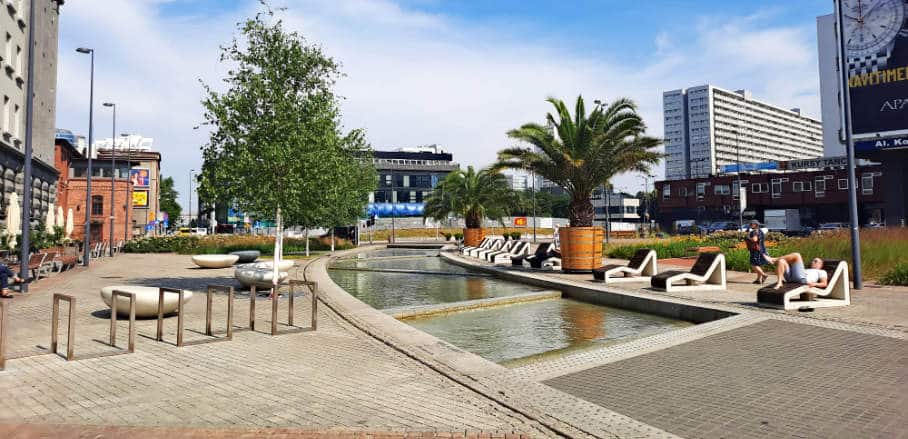World Urban Forum 11: Now is the Time to Transform National Urban Policies into Local Action
Laura Puttkamer concludes URBANET’s spotlight on the eleventh session of the World Urban Forum.
Three Cs dominated this year’s World Urban Forum: climate, conflict and Covid-19. More than 16,000 urban planners, academics, NGO members and other city enthusiasts signed up to participate in the 11th World Urban Forum, held in Katowice, Poland. The event culminated in the Katowice Declared Actions. According to Ms Maimunah Mohd Sharif, Executive Director of UN-Habitat, “this document shows our willingness to take a stand. Cities are places where hopes and dreams are made, but if we don’t get them right in the next ten years, it will be too late.”
A Platform for Elevating the Voices of Local Leaders
From June 26 to June 30, more than 700 speakers shared their knowledge and experience on urban development in over 400 events. The conference centre in Katowice was buzzing with ideas, fruitful exchanges, an urban expo with dozens of booths, and most of all with people networking, sitting down together and discussing key urban challenges.
At the German pavilion, the minister for housing, urban development and construction, Ms Klara Geywitz, opened a week of events by emphasising the need for a strong national urban policy in each country. She shared that Europe is already a forerunner when it comes to strong and successful collaboration between cities and other levels of government. “But we want to intensify the dialogue”, she stressed. With Germany at the helm of the G7, there are many opportunities for shaping the future of our cities. One of them is the new U7 initiative, an Urban 7 Alliance focusing on multi-level governance. Mannheim’s mayor, Mr Peter Kurz, described the U7 as a “platform for elevating local leaders’ voices”. He said that cities are not just objects of policies but need to shape their own strategies and their interpretation of a National Urban Policy. While the U7 consists of the same members as the G7, it invites all other countries and cities to support issues such as a post-war development strategy for Ukraine and localising SDG 11 in the Global South.

Katowice © Laura Puttkamer
Mayors Leading by Example
Considering that by 2050, 70 per cent of the world’s population will live in cities, it is key to focus more on urban development to solve the triple C crisis. As the first responders, mayors have a direct connection to people. It was refreshing to see that so many of them were present at Katowice to exchange ideas with their peers.
The mayor of Katowice, Mr Marcin Krupa, led by example. Countless interested parties approached him to learn more about Katowice’s astonishing urban development. This medium-sized city in Southern Poland, the capital of Upper Silesia, fell into despair in the 1990s when its coal mines closed. The corresponding heavy industry companies also had to close; environmental degradation, unemployment, and a sense of hopelessness prevailed. Yet, in only 30 years, Katowice has managed to turn things around by implementing brave initiatives focused on culture. The conference centre, as well as the neighbouring Silesian Museum and a concert hall, exemplify this: they are located on top of a former coal mine. The city presented itself as a vibrant hub for international conferences, the IT industry, retail, and services. A new key project, a Gaming and Technology Hub, shows just how far this former industrial city has come.
Importantly, Katowice has also managed to integrate its citizens into the WUF. Compared to WUF10 in Abu Dhabi, which happened behind closed doors, WUF11 was very accessible. The 11 different zones of the event ranged from a youth zone to a science zone, an SDG corner, a music zone and relax zones. All of these were spread out around the conference centre in the spirit of the 15-minute-city. Katowice also shows how a car-centric city can become much more friendly towards pedestrians. While there are still big highways very close to the city centre, all conference zones were easily accessible via barrier-free walkways lined with trees, waste bins and bike paths, as well as clear signage. Many of these zones, as well as SDG11-related events, will continue throughout the year and beyond, inviting citizens to learn more about the work of UN-Habitat and about the importance of sustainable urban development.

Katowice © Laura Puttkamer
What comes next? WUF12 in Egypt!
After the excitement of a successful conference with representatives from over 170 countries, the question is: what comes next? WUF12 will be held in 2024 in Cairo, Egypt and offers another check-in point for the progress of the New Urban Agenda. The Sustainable Development Report 2022 demonstrated that almost every city is behind in its implementation of SDG 11.
But there is still hope. The World Cities Report 2022, published during WUF11, presents three possible scenarios for the cities of the future: a worst-case scenario, a business-as-usual scenario, and an optimistic scenario. To work towards the optimistic scenario, it is more important than ever to remember that we are already in the UN Decade of Action. Now is the time to implement National Urban Policies by breaking them down to each city into ever-smaller pieces – mayors play a key role in creating tangible results. The example of Katowice offers hope and inspiration for how to achieve drastic urban change in just a few years.
“We only have about 90 months to implement the 2030 goals for cities. That’s 2,700 days. Let Covid-19 be our wake-up call to really start localising SDG11.”, Ms. Maimunah Mohd Sharif concludes.
- Where the Rubber Hits the Road: Localising Climate Action in Cities - 1. March 2024
- Cities and Climate Change: The Buildings Breakthrough at COP28 - 12. December 2023
- Policy and Financing for Net Zero Carbon Buildings: Insights from COP27 - 18. November 2022
